It’s been a long time since I flew FPV for the last time, no blog posts no time for my hobby, so sad. But then I stumbled across this new beginners course for FPV drones in Switzerland by DRACER.ch. DRACER’s goal is to introduce beginners to drone flying and teach them to have fun in a … Continue reading FPV beginners course by DRACER.ch
FPV Racing – What You Need To Know
What is FPV Drone Racing? Drone racing is exactly what it sounds like. The pilots use an FPV (First Person View) system to allow them to race the drone just like if they were in the cockpit. As you can imagine FPV is absolutely necessary given the extreme speeds of the drones. Despite there being … Continue reading FPV Racing – What You Need To Know
Bye bye 2015 and outlook 2016
The second year of the fpvblog can be summed up as a year with high ambitions, a low article count and the welcome of Alastair Baker our first guest author. Chrashpilot, the editor in chief, hopes that the blog will be more active in 2016 (guest authors welcome). He also expects the next year to be … Continue reading Bye bye 2015 and outlook 2016
Crash pilots hitting the trees
In a dark, dark wood there sat three dark, dark men; And the dark, dark men were wearing dark, dark googles; But the dark, dark googles had NO dark, dark screens; Because on the bright, bright screens there were…… drones! Finally, FPV racing comes to the FPVblog. After owning a Gemini for almost a year … Continue reading Crash pilots hitting the trees
9 FAA proposed small drone rules
Hey, chap! Before you start to explore the world through the eyes of drone technology, there are certain terms and conditions that you should make yourself familiar with. First article by guest author Alastair Baker. Federal Aviation Administration (“FAA”) is the government organization in the US that imposes the rules and regulations on commercial aircrafts, … Continue reading 9 FAA proposed small drone rules
New DJI Mavic Air Drone | Major Improvements
DJI lately announced the DJI Mavic Air drone. It costs less than 800 USD and has many improvements aboard, that its predecessors could only dream of.
Let’s unveil why the Mavic Air is DJIs new consumer drone flagship.
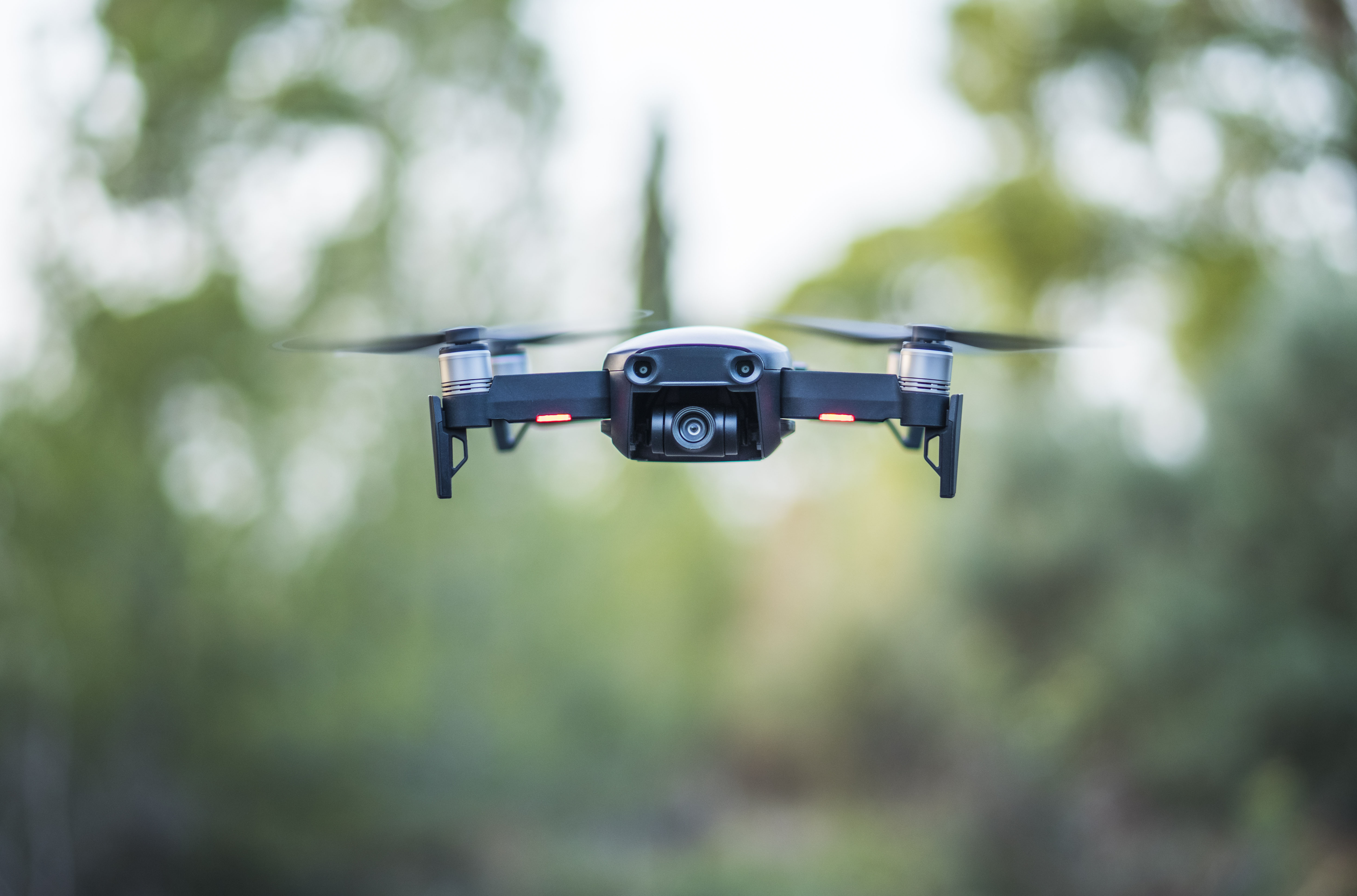
DIMENSIONS
The new Mavic Air drone is the smallest 4K Ultra HD drone ever built by manufacturer DJI.
Already that is a significant change!
The drone is way smaller than its predecessors but nevertheless records at the same resolution.
It is tiny enough to fit into every backpack and can be brought everywhere.
The DJI Mavic Air is the perfect travel companion, and its size is a milestone in the drone industry.
BITRATE
Not only is the size for a 4K drone insane. But the level of detail the tiny camera is capable of saving blew me away when I first studied the tech specs! While many competitors and even some larger DJI drones still record at bitrates between 20 and 60 Mbps, the new Mavic Air drone writes its files with 100 Mbps.
That’s incredible, as a whole lot more information will be saved and not wasted.
It is a noticeable and significant change for everyone who aims to create beautiful and cinematic videos.
INBUILT STORAGE
Another change is the inbuilt storage. Never has a DJI drone featured internal memory before. If you forget your MicroSD card or if it is full after a long day of flying and filming, you don’t need to worry, as you can record your films and save your photos to the 8GB of internal storage. DJI could have added a few extra gigabytes, but we should not forget that the storage is meant to be a backup!
For everyday filming, DJI still recommends using MicroSD cards.
By the way: because of the high bitrate, you need a high-speed card.
Find the two best cards right here.
OBSTACLE AVOIDANCE SYSTEM
Big news, like huge news, is the drones obstacle avoidance system.
Not only is the drone prepared when being in forward flight, but this is the first ever Mavic drone to feature a backward facing obstacle avoidance system as well.
The anti-collision cameras will keep your investment safer than ever before.
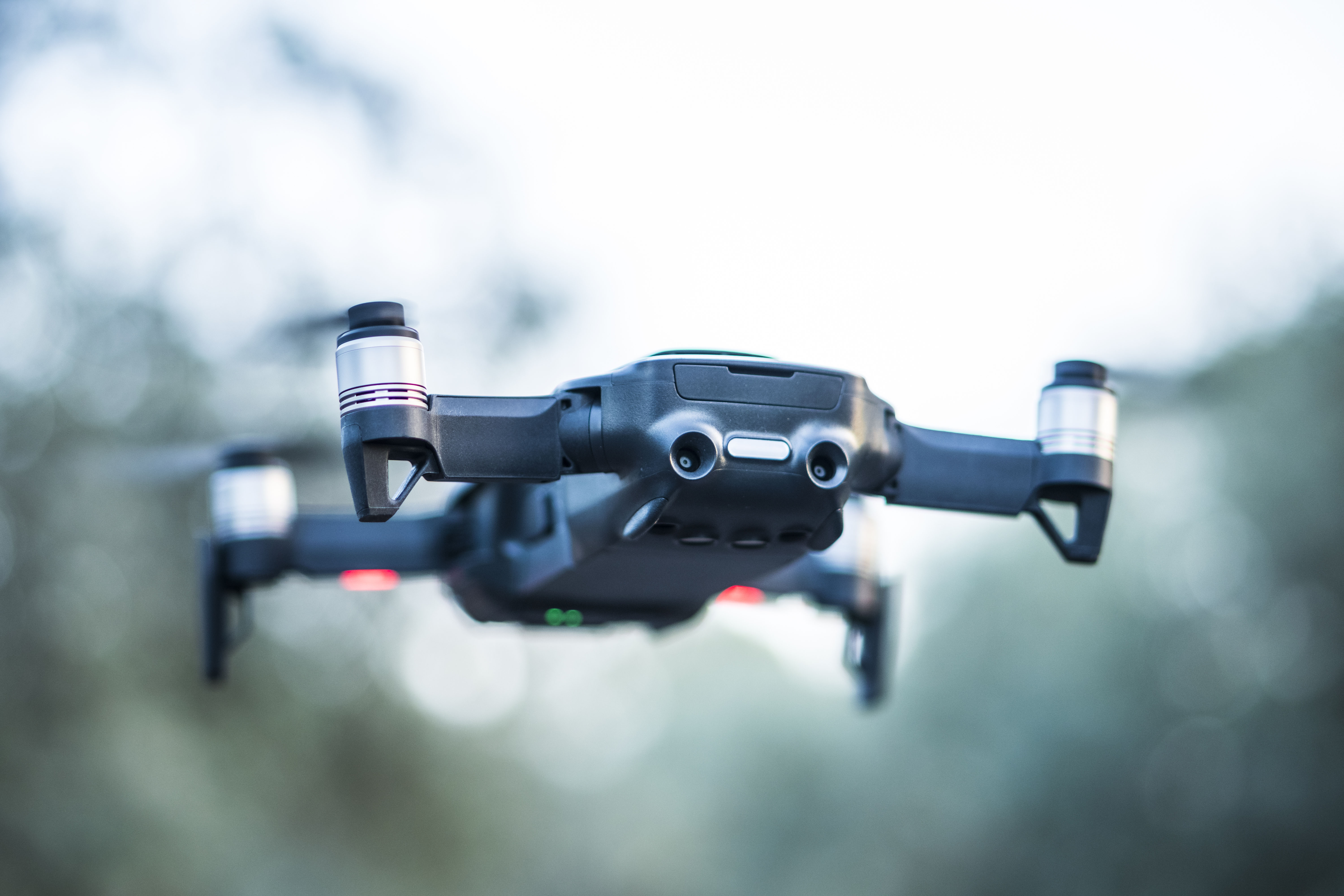
The backwards facing sensors of the DJI Mavic Air drone
QUICKSHOT MODES
The DJI Mavic Air drone features four Quickshot modes that could already be found on the
DJI Spark drone. But DJI added the boomerang mode, that looks very cinematic, and the asteroid mode, that combines regular filmmaking with photography.
360° and Tiny Planet Photos

With the DJI Mavic Air drone, you can take 32MP 360° photos within seconds.
Just one tap on the smartphone enables the mode, and the drone takes a row of pictures and automatically stitches them together right after.
You can download free RAW photographs taken with the DJI Mavic Air drone right here.
GESTURE CONTROL
Controlling the DJI Mavic Air with gestures is another significant change.
Ever since the first tries, DJI worked hard on enhancing the mode.
It was already working quite nicely on the tiny DJI Spark drone, but with the DJI Mavic Air, they perfected it.
Many new gestures allow the operator to control the drone precisely.
It can be flown closer or farther away from the operator, it can be positioned with a palm and can take videos or selfies. Entirely without a remote controller or smartphone.
PRICING
The pricing is another major change, even though that sounds a bit weird.
But because DJI saved some money here and there, they limited the flight range from 7km to approx. 4km and the remote controller does not feature the small information screen anymore that we were used to from the predecessor, the DJI Mavic Pro, they were able to sell the
all-new DJI Mavic Air at a fair pricing point. It costs less than 800 USD!
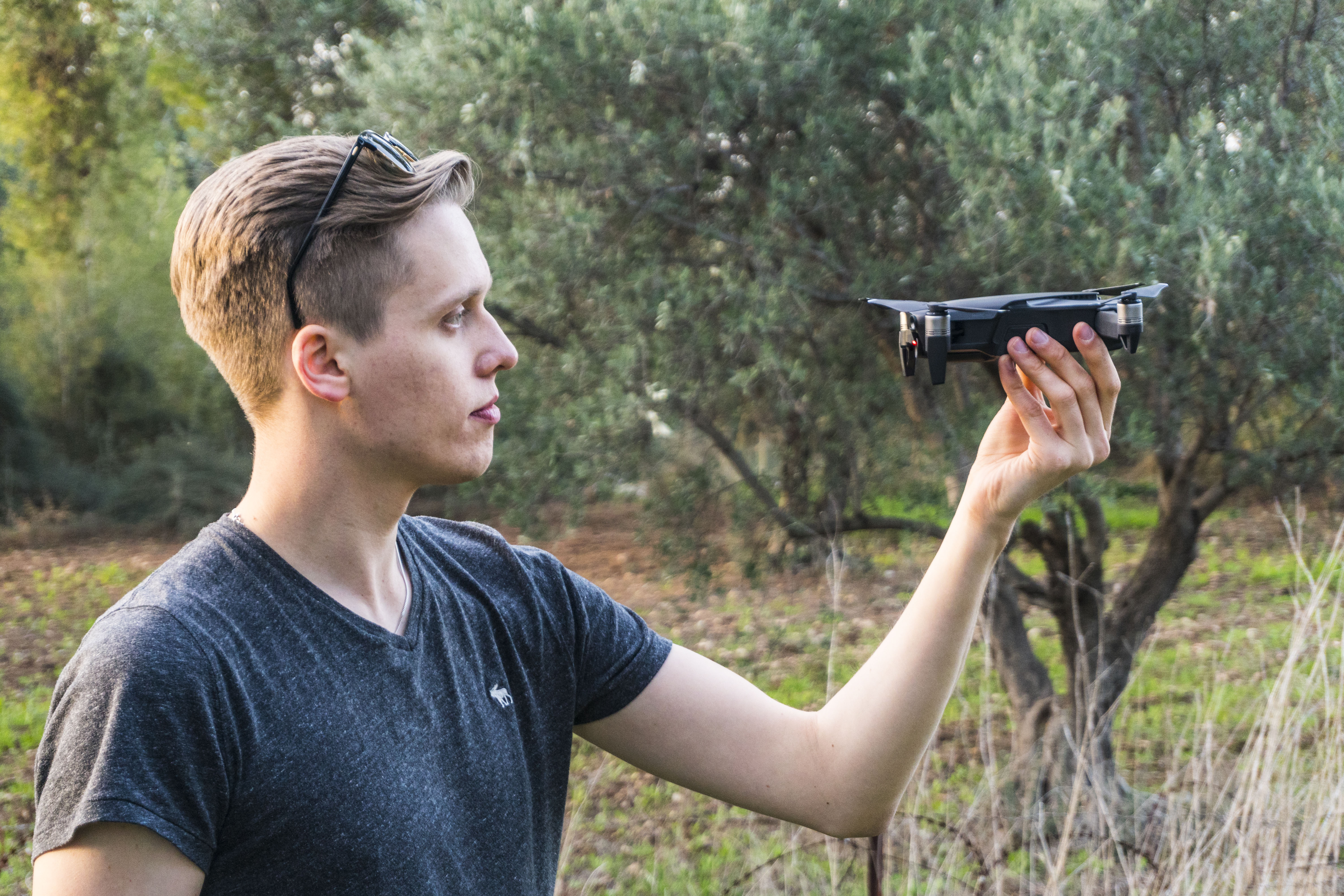
CES Las Vegas: DJI unveils three new products
As every year, the audience at CES in Las Vegas had no reason to be disappointed.
New gadgets and devices everywhere. Some more, some less useful.
Famous drone manufacturer DJI announced three new products.
Please note that DJI has not yet released most of the tech specs of the new products.
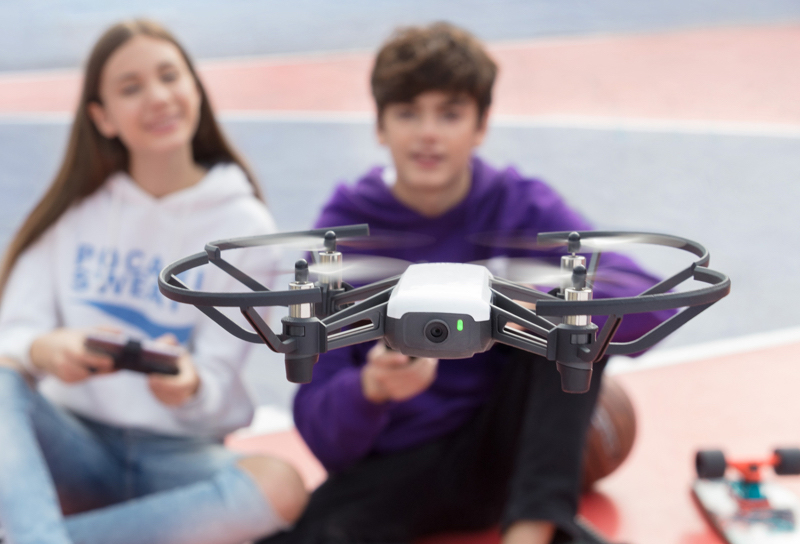
When it comes to gimbal stabilizers for ground cameras, every filmmaker knows the DJI Ronin series.
The reliable and high-quality stabilizers took part in many big film productions already, and even smaller budget filmmakers use it frequently.
But still: to most users, the Ronin gimbals were too clunky and therefore uncomfortable to handle.
DJI now presented the all-new DJI Ronin S, that was specially designed to work with smaller cameras, like DSLRs or mirrorless cameras.
Most details have not been published yet, but from insiders we know that DJI not only tried to completely change the design, making it smaller and more comfortable to carry, but the new DJI Ronin S is supposed to leave the competition behind with many new intelligent usage features.
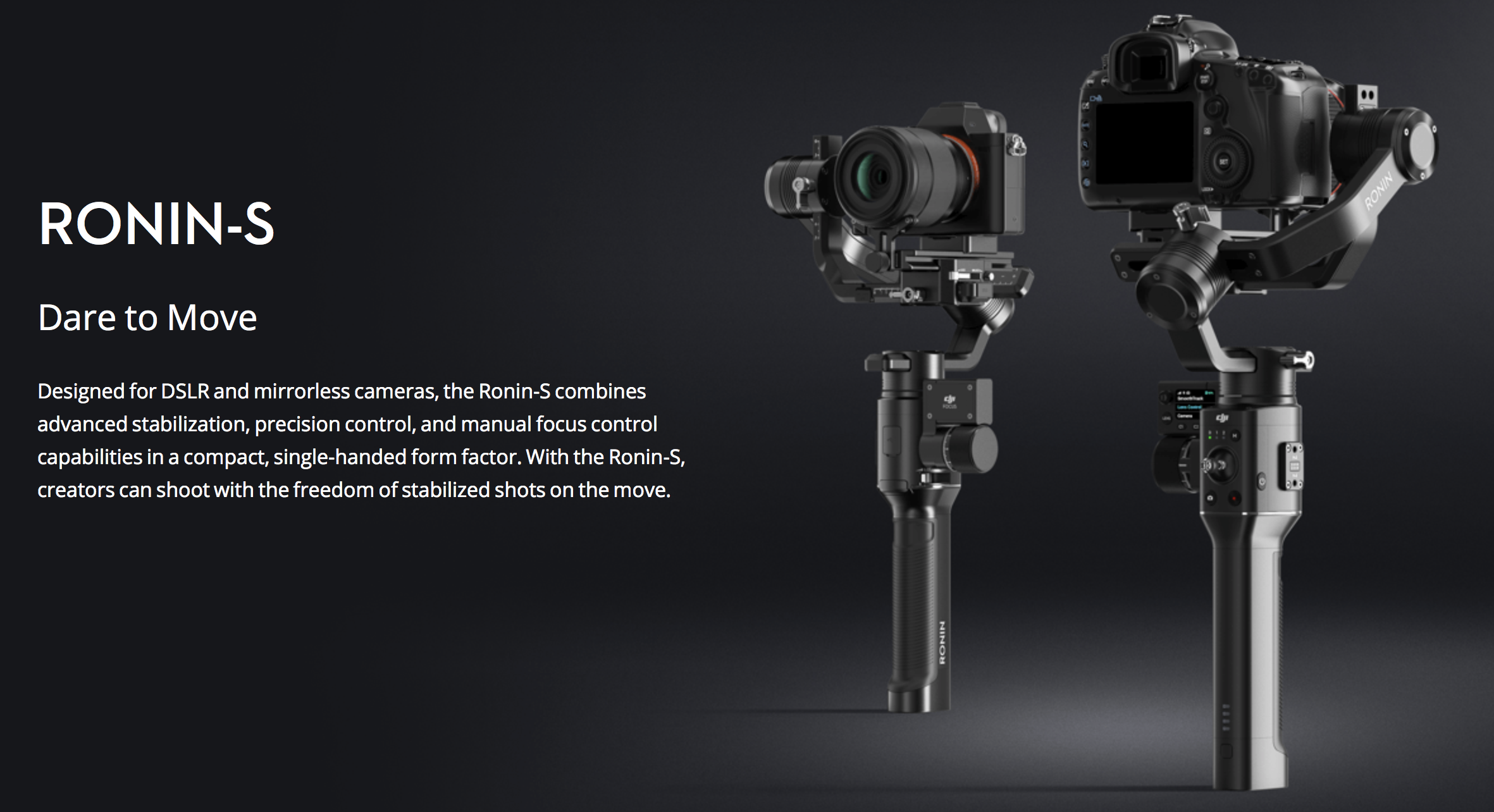
Not only can you stabilize bigger cameras, but DJI also builds solutions for smartphones.
No more shaky records with your smartphone’s camera. You will be amazed, how professional the footage can look like when only being stable. Even though it was taken with a normal phone.
The first series, the DJI Osmo Mobile showed many bugs and weaknesses. DJI promised to get rid of those, not only adding new features but making the whole system more reliable and easier to use.
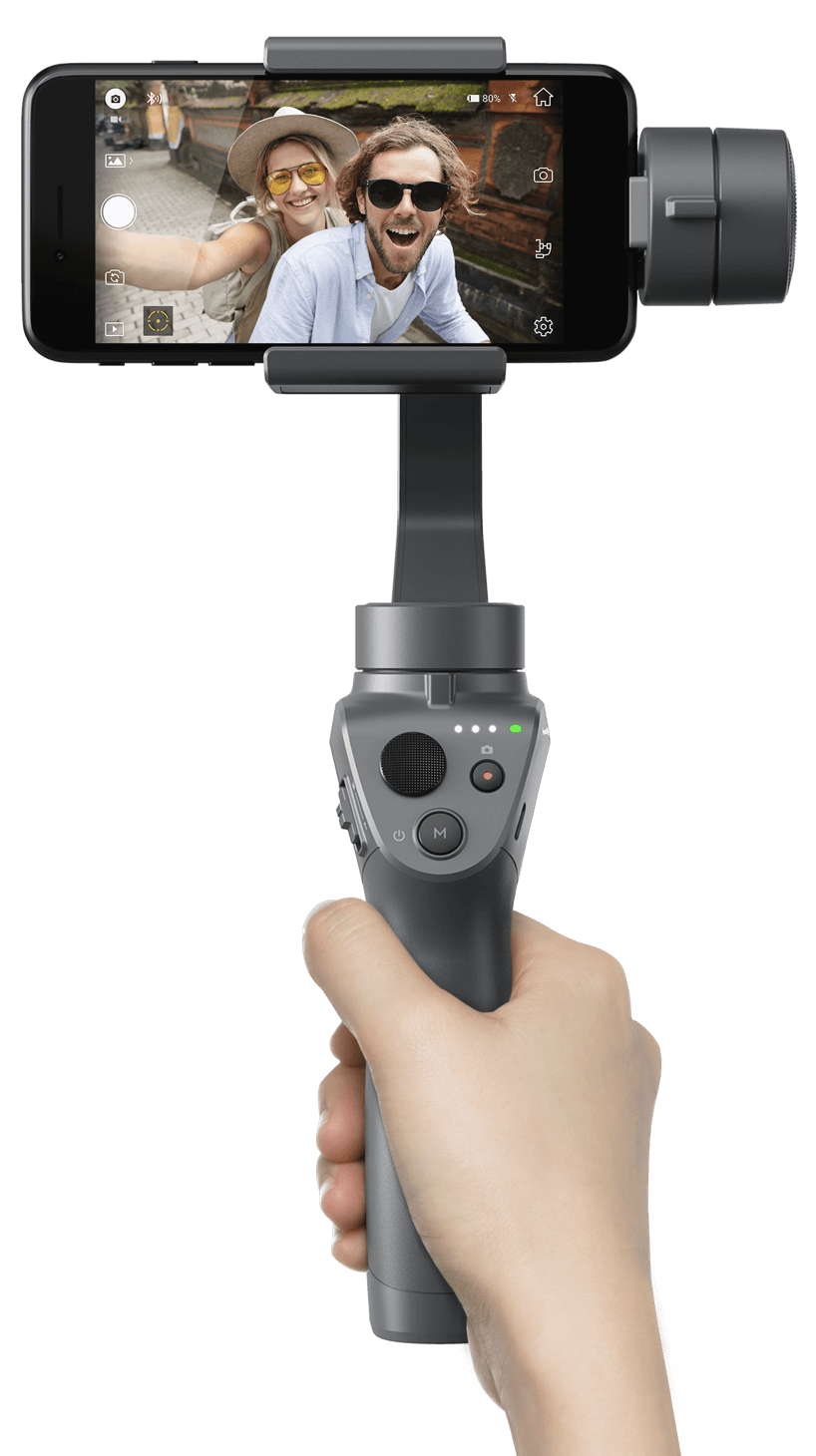
As DJI is specialized in high-end consumer and even professional drones, it was a surprise to hear that their newest drone model is a toy drone.
It shows the manufacturers intention of taking over the market for miniature and cheap drones.
The new DJI Tello drone weighs 80 grams and will cost 99$ only (find the current pricing here).
The drone was designed for safe indoor and even smaller flight cruises through the garden. Its 100m 720p HD transmission system is hugely gratifying in this price range.
The Tello drone has DJIs reliable VPS sensors installed that will make the drone hover in the air safely. No more crashing, no more flying like the drone was drunk.
If you want to make your kids happy or enjoy one of the smaller games you can play with Tello yourself, you might think of purchasing one or two units.
The built-in technology and features the DJI Tello drone offers will be more advanced than the competitors, as DJI is famous for super easy to fly and safe drones.
No more crashing and not enjoying the flight, only because the drone is cheap. Tello is the first of a new generation of toy drones.

CONFIRMED! DJI announces first aerial 6K camera
Without a lot of hooplas, DJI has announced the first ever 6K 30fps aerial compact camera.
It has a larger sensor than its predecessor and fulfills many filmmakers dreams.
The all-new DJI Zenmuse X7 camera allows filming cinematic aerials with a compact allrounder drone. That is a milestone in the industry.
The X7 is compatible with DJIs professional Inspire 2 drone that is small and lightweight and can be brought everywhere.
In the future, the new DJI X7 is supposed to be compatible with other DJI drones and platforms as well.
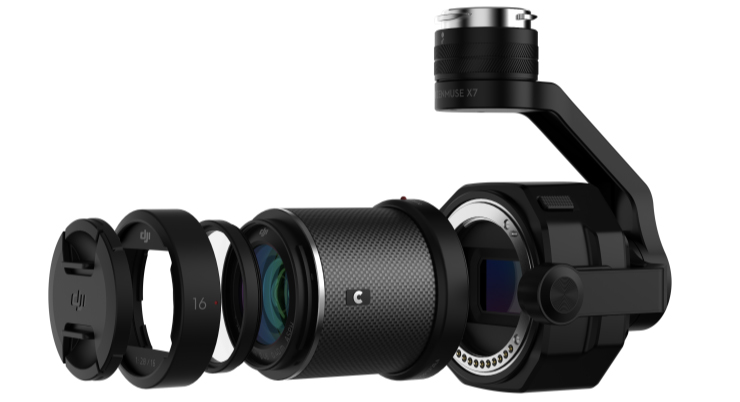
One of the major highlights of the new camera is its cinematic 35 mm sensor (23.5 x 15.7 mm), which provides up to 14 stops dynamic range, offering the editor tons of possibilities in post-production.
The camera records RAW footage in 6K at up to 30fps, while if recording in 3.9K you can choose a maximum of 59.95fps for real slow-motion recordings.
The photo specs sound promising as well: the all-new DJI Zenmuse X7 has a resolution of 24MP.
A major highlight is the new 35 mm sensor,
offering 14 stops dynamic range
Like it’s predecessor the Zenmuse X7 camera uses a CineCore 2.1 processor to write DNG RAW or Apple ProRes files.
The 6K clips are being saved to a particular DJI CineSSD card that has to be purchased separately, as well as the license keys for both formats.

Pilots and filmmakers who don’t see the need of recording in 6K RAW can always use a fast MicroSD card to record standard H.264 or H.265 (for videos) or JPEGS or DNG (for photos).
The DJI Zenmuse X7 camera is three-axis stabilized and has a DL lens mount. It currently works with four prime lenses: 16, 24, 35 and 50 mm.
The 16 mm F2.8 wide-angle lens comes with an inbuilt ND filter.
Not only is it more comfortable, but it saves a lot of time, as there is no further need to balance a lens after applying a filter.
Worth mentioning is the lenses leaf shutter that minimizes the ugly rolling shutter effect, simplifies indoor shootings with artificial light and prevents scattered light from entering the lens.
The Zenmuse X7 currently supports four
prime lenses: 16, 24, 35 and 50 mm.
You can check out the current pricing of the DJI Zenmuse X7 right here.
Conclusion: the all-new DJI Zenmuse X7 camera is the go-to solution for professional filmmakers who need a small and easy-to-handle aerial setup.
It’s 6K RAW camera offers a ton of creative options.
If you own a DJI Inspire 2 drone, you might think of purchasing an X7 camera to raise your production level drastically.
How to recognize a good drone pilot | 6 characteristics and skills
How can you recognize a good drone pilot in times of GPS, Glonass, anticollision, VPS and many other sensors that take a lot of work off our hands?
I have summarized three crucial daily-life skills that every ambitious and professional drone pilot needs to master – and three behavior patterns, that show a good pilots knowledge and professionalism in every situation.

Flight without GPS + Glonass
If you want to be able to maneuver your drone in an emergency situation safely, you really should have some knowledge of how to use the ATTI flight mode.
It only uses the drones air pressure sensors, while not holding the position with the help of GPS and Glonass as usually.
That finally means that if a wind gust hits the drone, it will drift with the wind – or if you let go of your remote controller’s stick, the drone won’t immediately come to rest, but fly on for many meters.
No worries, using the ATTI mode is quite easy – here you find an entire guide plus a video tutorial of mine.
Manual PoIs
Pilots who can circle objects manually while always keeping them in the center of the frame, usually are more experienced.
Most pilots just go ahead and choose DJIs Point of Interest mode to get steady and smooth circles done, but with only a bit of practice, you can do it manually, which is a lot more precise.
It is pretty simple: start flying your drone f.e. to the right, smoothly, steadily and consistently (usually you use the right stick of your remote controller).
Now start rotating the drone slowly around its axis, but the other way around, in this example to the left.
Once both movements are consistent, your drone will fly a perfect point of interest.
Fly a straight line
Have you ever tried to fly a straight line while rotating your drone – without using the
Course Lock mode?
This easy sounding task has put many drone pilots to their limits.
Try to fly at a constant speed and not too slow and start rotating your drone, while adjusting the drones course.
It is not easy, but once the lump is cracked (as we say in German “Der Knoten ist geplatzt”) your overall flight performance will be a lot more precise, as you have carved out a genuine feeling of controlling your drone.
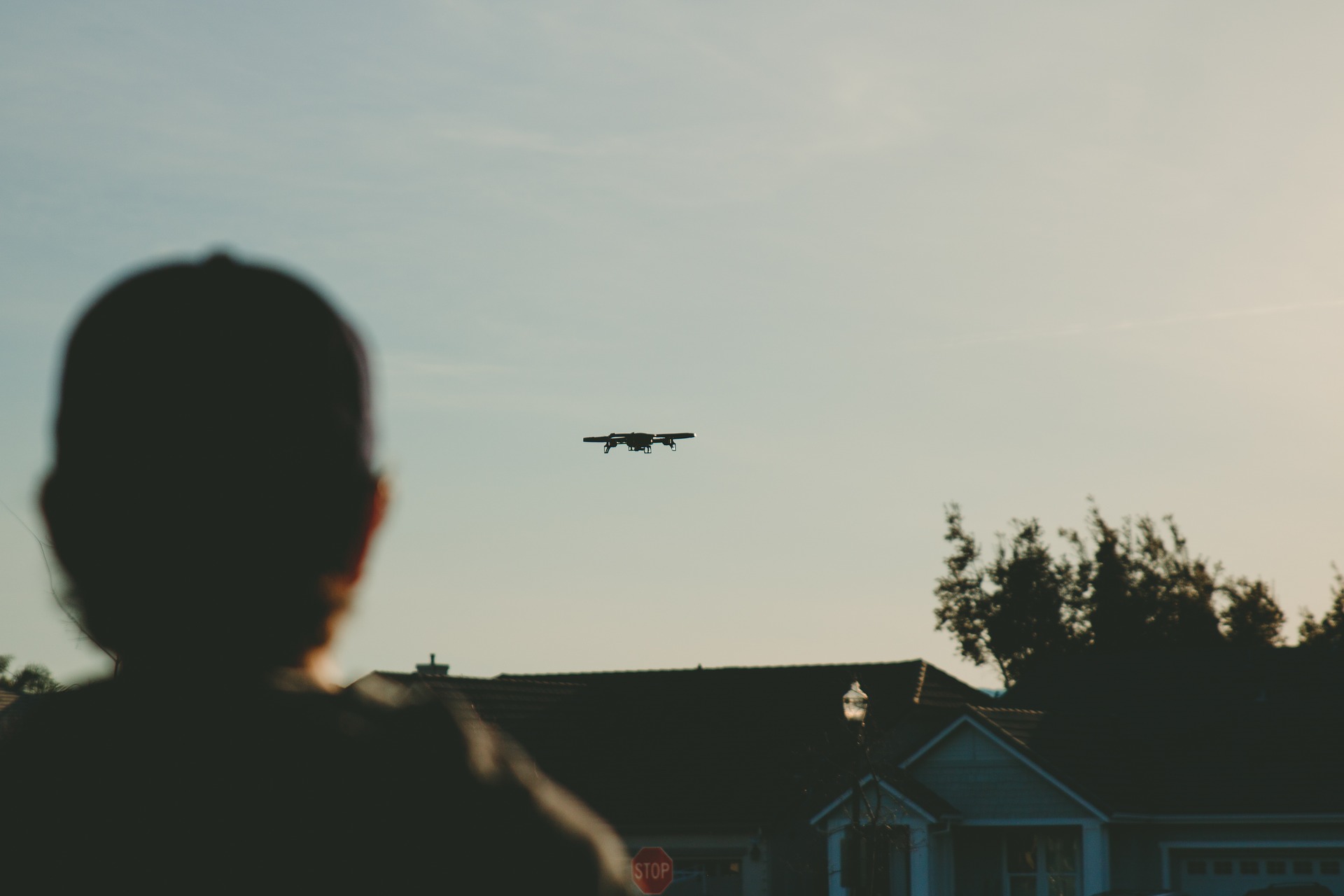
We now want to focus on three characteristics that often indicate a professional level.
Again, I don’t want to look at a made-up situation, but at daily-life behavior only.
Stay calm!
It might sound too simple, but being a self-controlled and calm pilot often avoids crashes from happening and situations from escalating.
Always think of the bigger picture before you make decisions in complicated situations: are all four propellers still attached and is the power level high enough to land in a safe zone, even if it’s not the home point – hey, it’s not too that bad then. It could be way worse, and there is an excellent chance of saving the bird.
But staying calm does not only apply to in-air situations: can you stay calm and act professionally if someone bothers you while you are flying your drone? Maybe even threatens or swears at you? You will be able to de-escalate if you stay calm. And never forget about the bigger pictures!
Stay quiet!
Real drone pilots want to enjoy a safe and pleasant flight and not attract attention at all cost. The more you focus on flying the drone instead of yelling around or just trying to show the world that you bought the nicest drone of all times, the fewer problems you will have to face.
And yes, some pilots enjoy presenting themselves better than focussing on the actual flight.
It’s weird for sure, and no, it does not look very professional.
Talking about volumes: have you taken a look at DJIs low noise propellers already?
Leave your funny sweaters at home!
If you are joining a drone pilots meeting or flying with family only, wearing a sweatshirt that answers some basic questions might be fun. But if you want to be seen as a professional drone pilot, leave the sweater at home – at least when flying in public.
You don’t have to talk to spectators all the time, but you can kindly ask them to wait with their questions until you have landed.
Especially these days it has become essential that we, the drone pilots community, not only stand together but talk openly about our hobby/job.
It is crucial that we represent it well, as we all are pioneers still and laws are strict enough already now.
If you want to purchase DJIs safest drone, you need to take a look at this model that can even circle you while autonomously tracking you without the risk of crashing into a tree when flying backward.

Why I am offline and how you can change it!
Dear subscribers and followers,
I am trying to stay connected: on my Facebook-Site, in a drone group on Facebook, on my two main homepages in English and German and of course on YouTube – and sometimes even on Instagram (yet though I’m not really into posting pictures only).
Over the last days, I have received dozens of messages.
I, over and over, received the question why I was not producing new videos, why I am not visible these days.
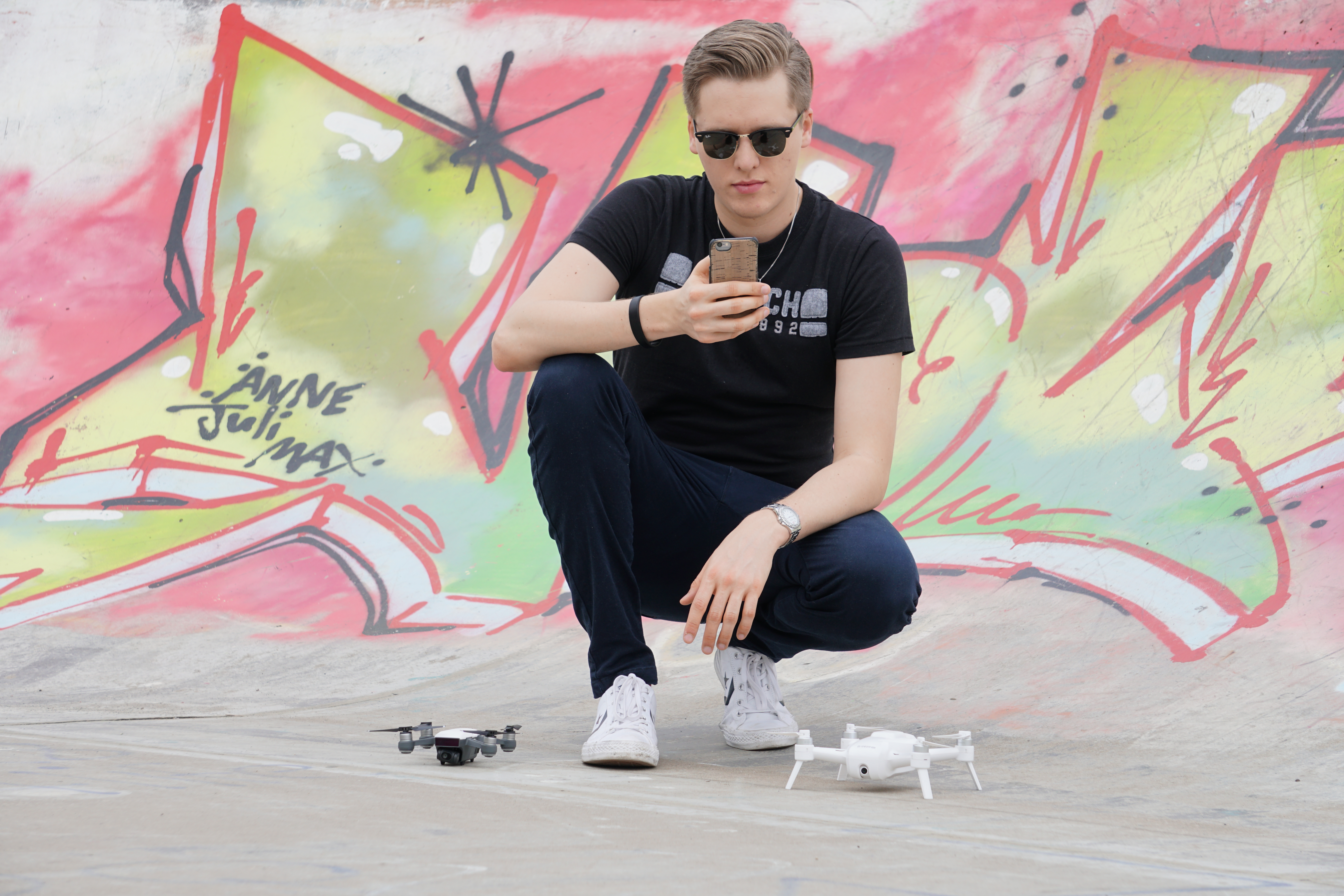
Due to personal reasons, I am moving from Paderborn, a town in mid-Germany back to a city in Germany’s southwest, Mainz (many of you know Frankfurt, which is about half an hour away).
Because all of this hit me very unpredictable, I do not have my flat yet, meaning that most of my drones and equipment are still in Paderborn, including my room for filmmaking (which I often call “small studio”).
I am looking forward to producing many new and exciting videos for you, but it might take a while until things are settled – I am giving my best, but sometimes our private life needs our full attention.
Until then though, I will keep on writing blog articles, maybe even film one or two videos, but I will be around on Facebook just as usual if you want to stay connected.

How can you make me create new videos?
1) Feel free to send in a video question (you can record and submit it right here) today. I might be able to answer some of your questions, may they be personal or about a specific topic, as I do have one of my cameras here and maybe a Q&A video would be cool. Feel free to share the link on Facebook (to collect some questions): www.tomstechtime.com/myquestion.
2) Feel free to check out the new areas of my website, for example, this page I set up lately.
Pretty exciting stuff, especially for beginners and advanced pilots.
Seeing traffic hitting my site always motivates me a lot.
3) I would be more than happy if you would support my work for free at www.tomstechtime.com/support. It is straightforward and has an enormous impact.
Due to people like you, I will already very soon be able to continue filming tutorials, reviews and more. Therefore let me thank you.
Stay tuned and fly safe!
P.S.: I thought to make a video about the whole matter and sharing it with approximately 125.000 people would be too much. 

